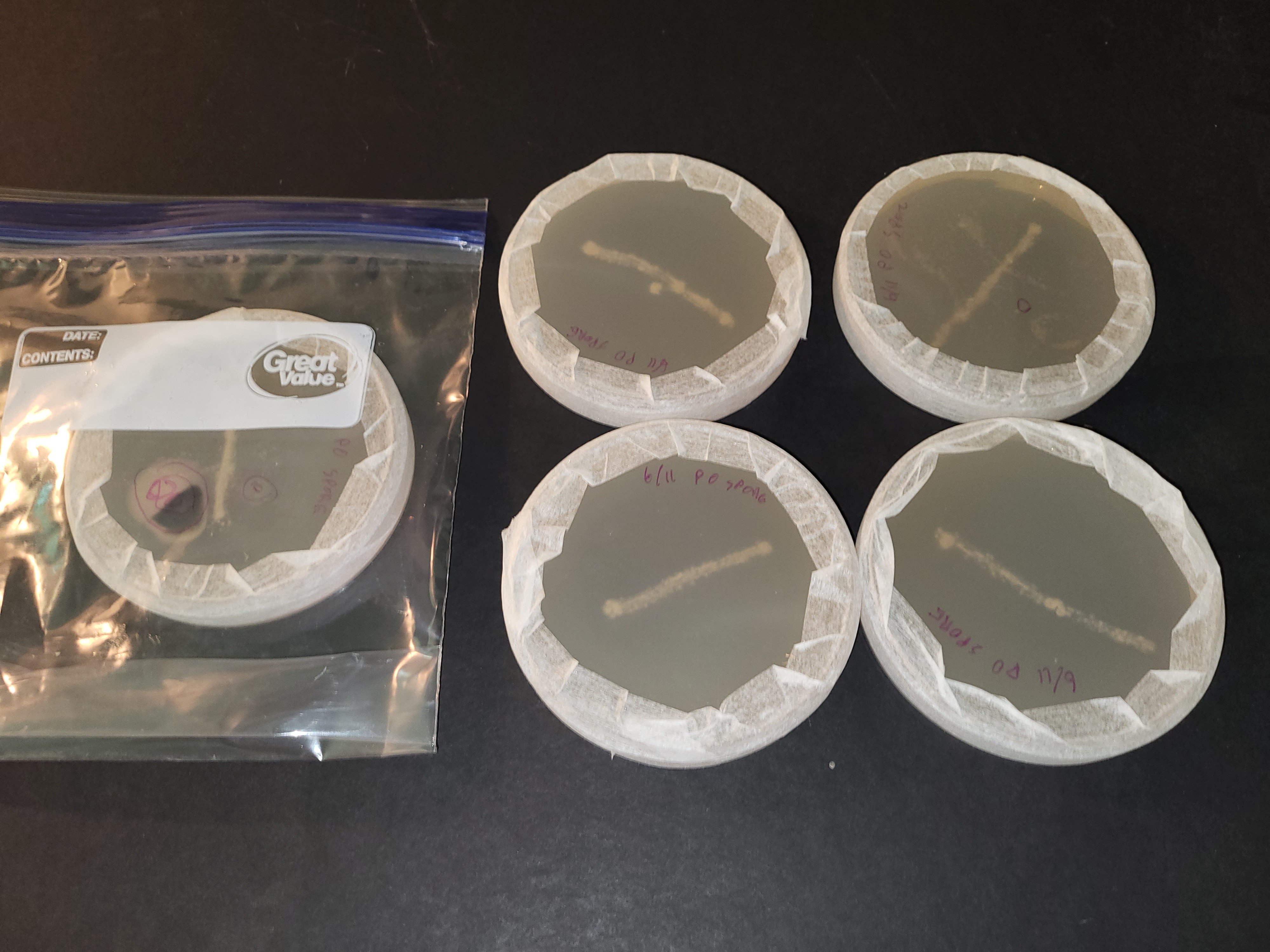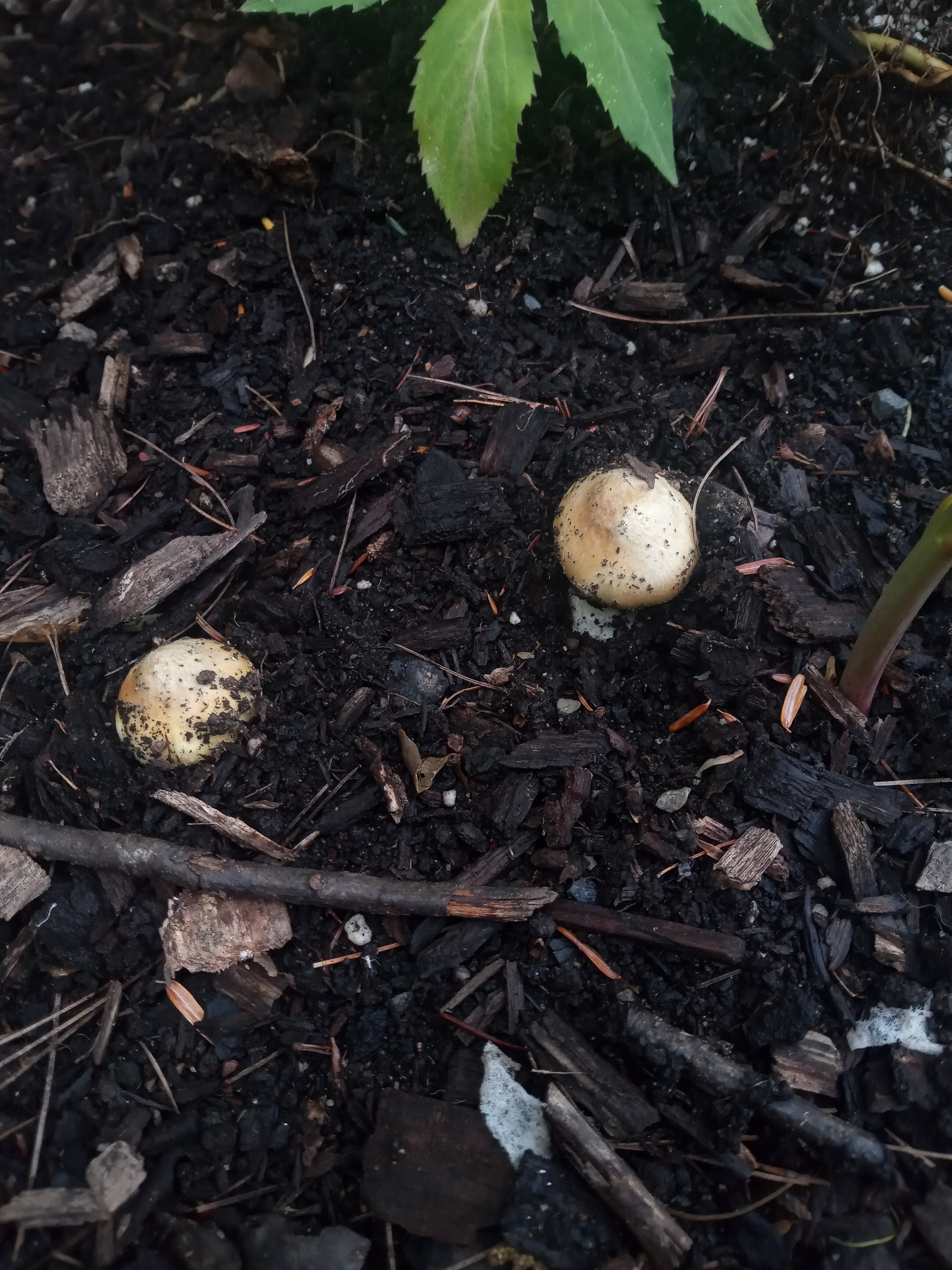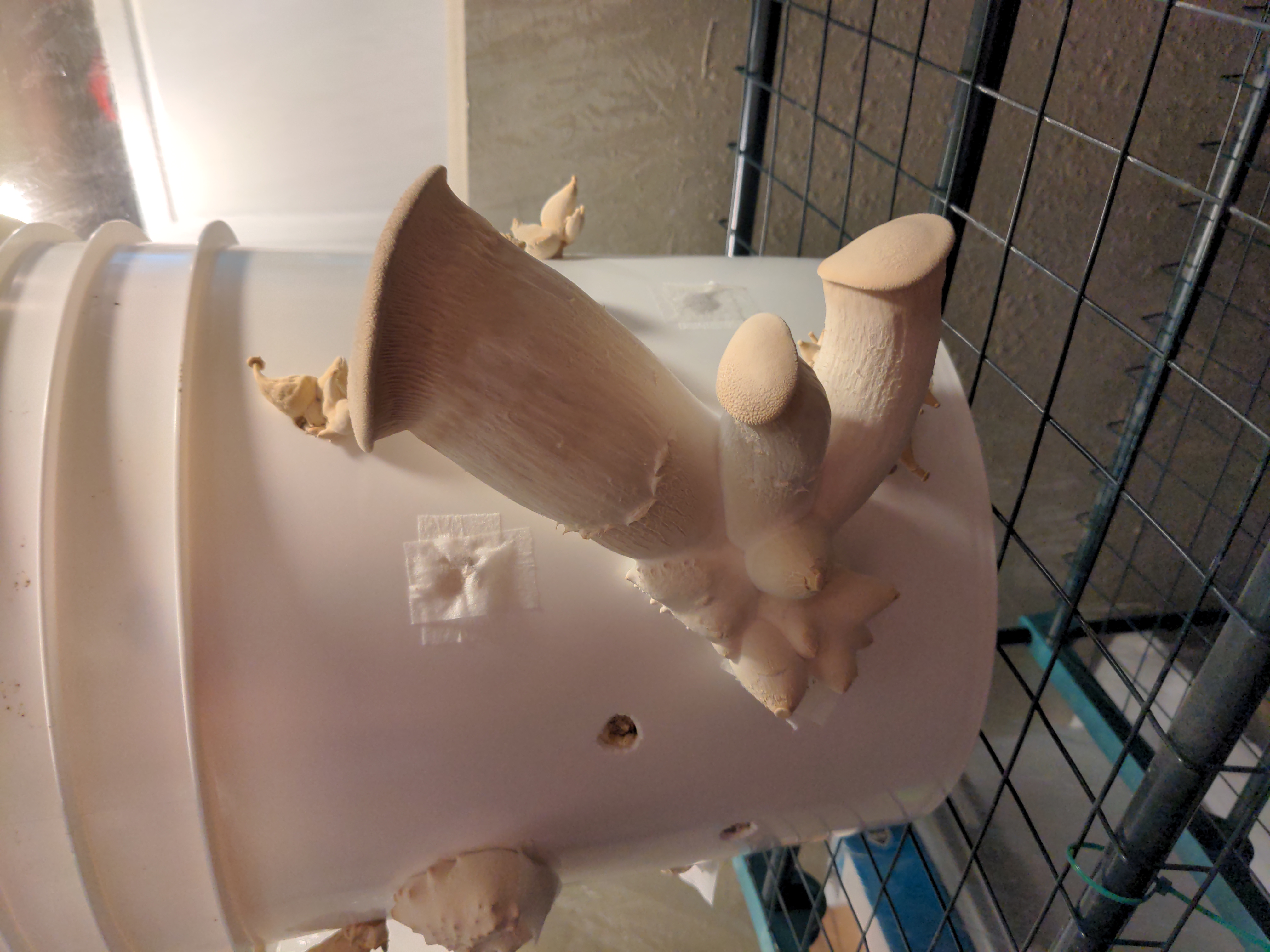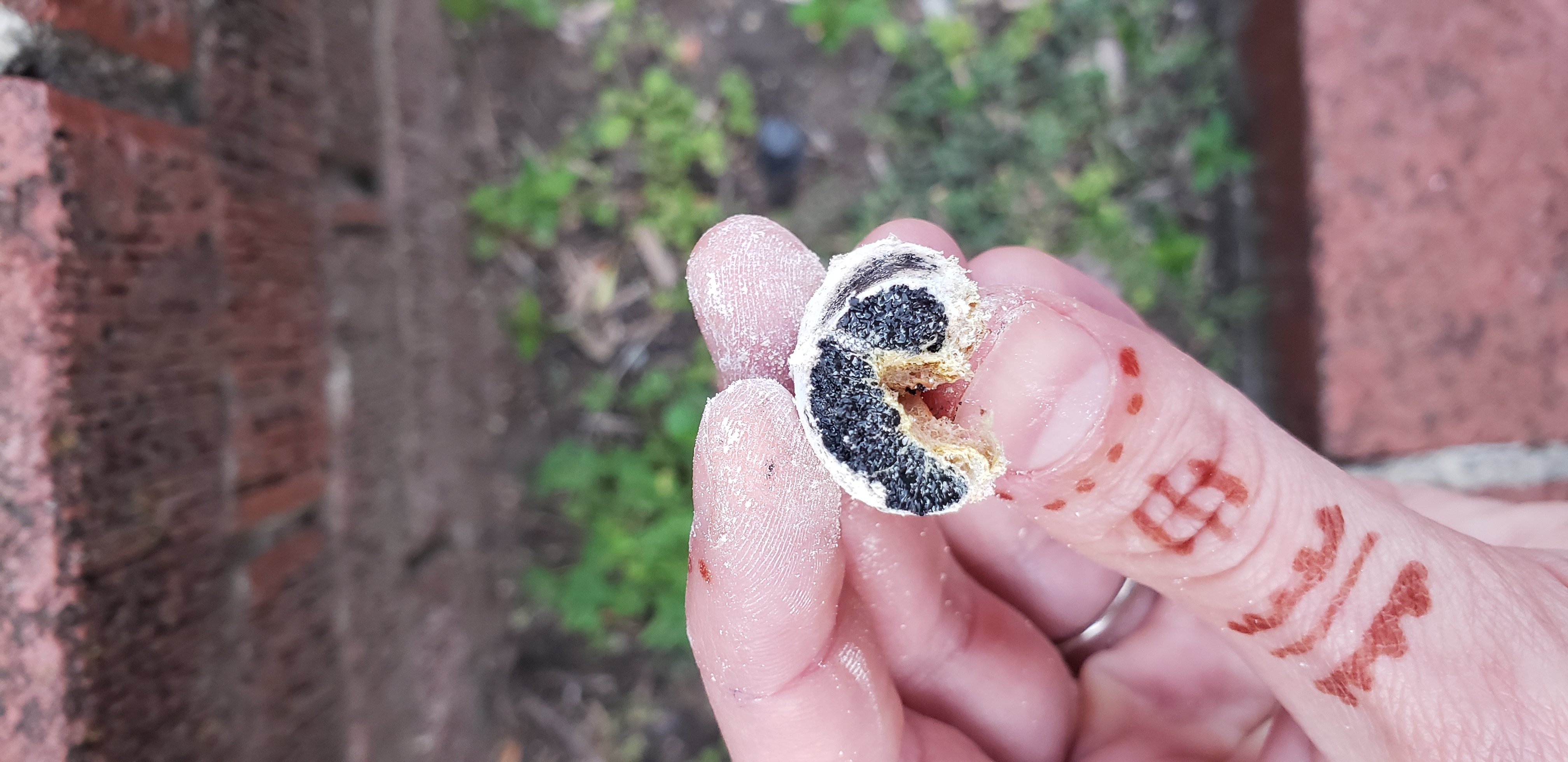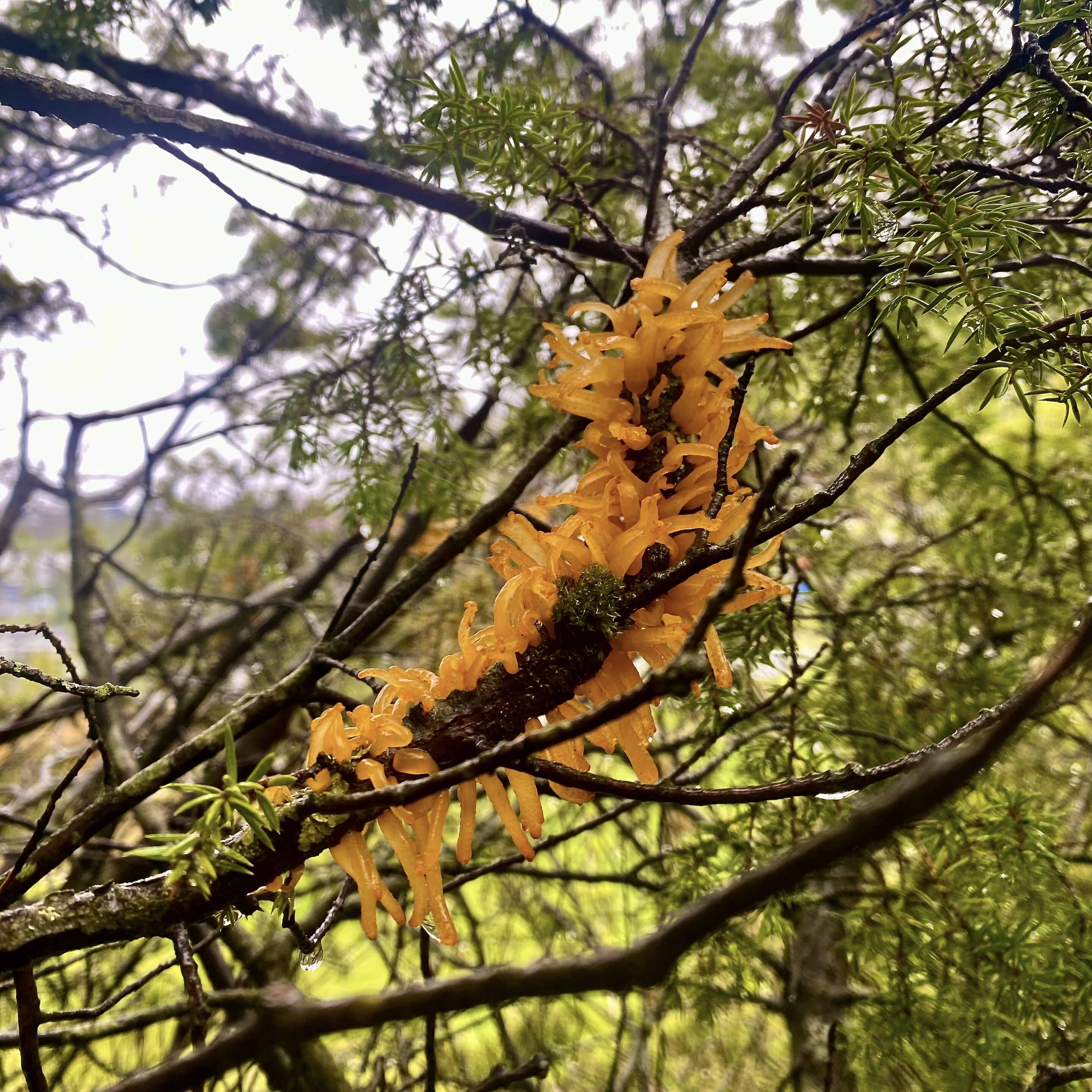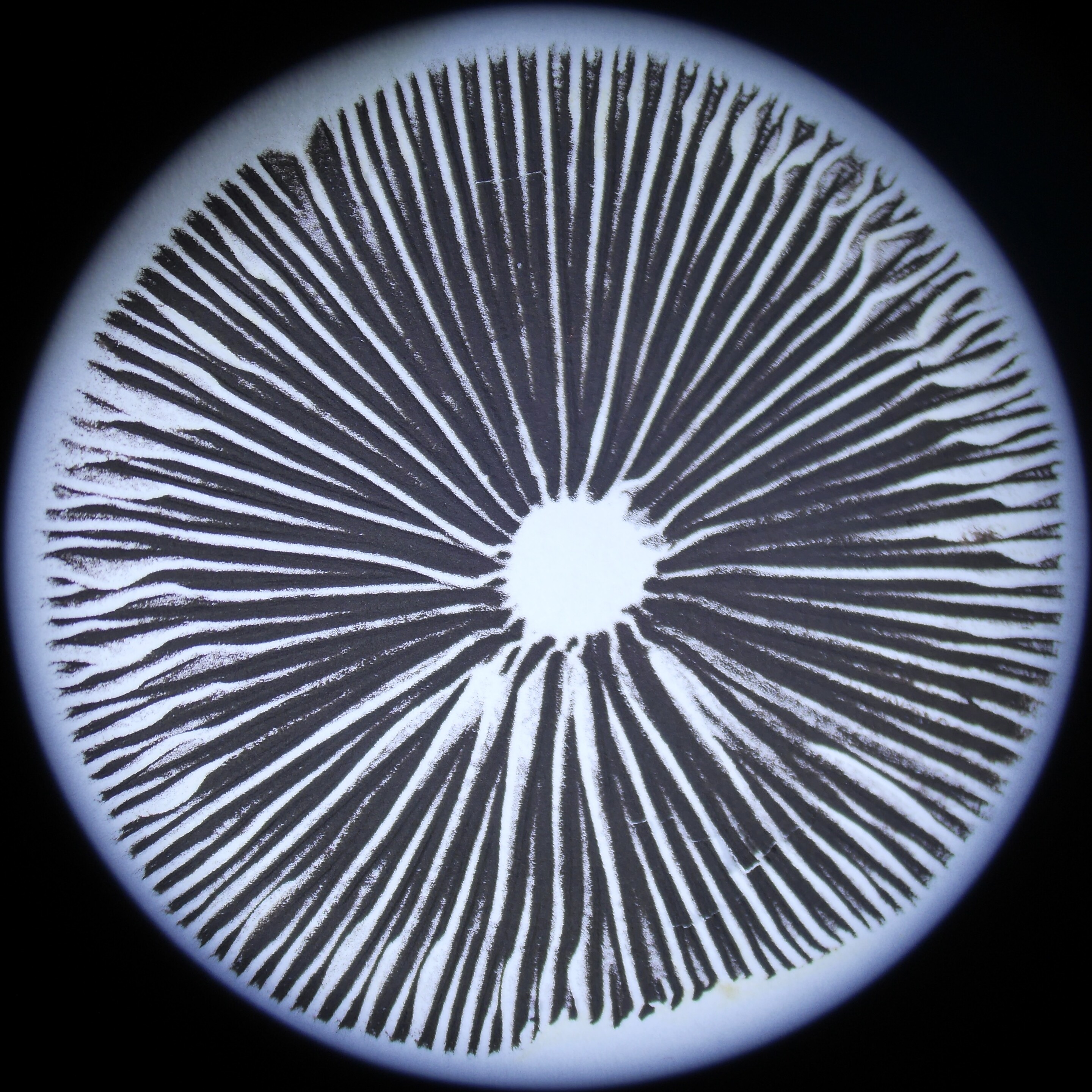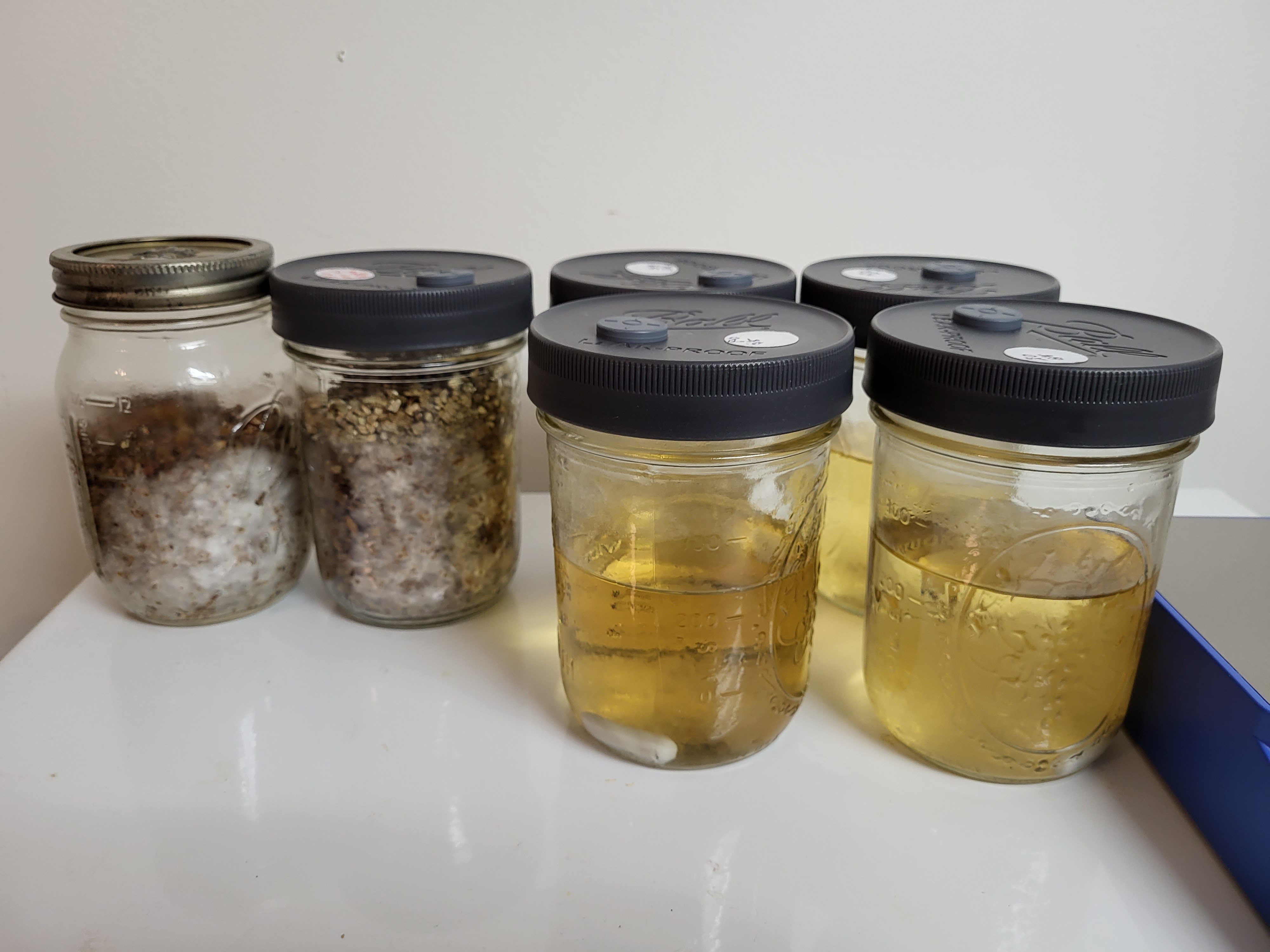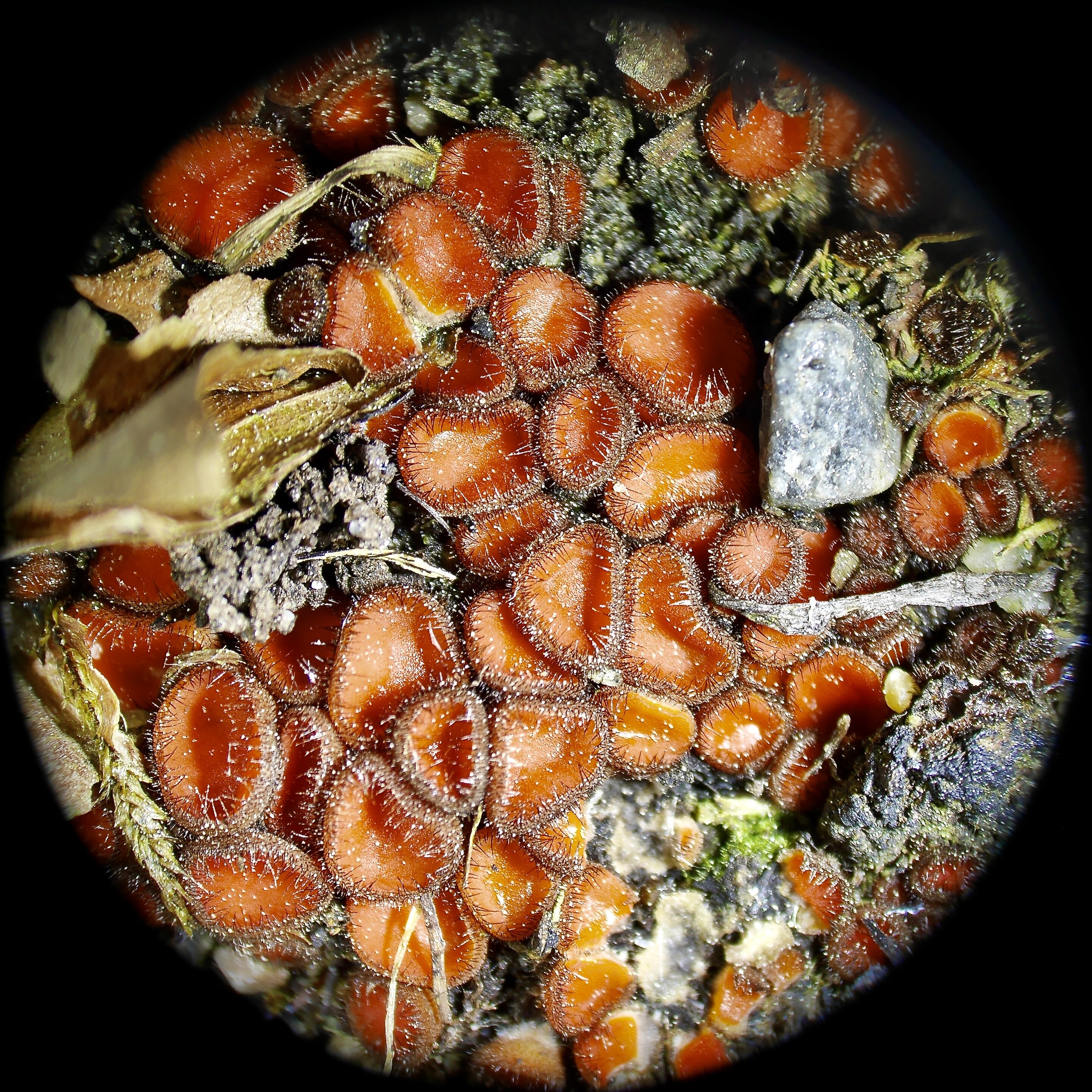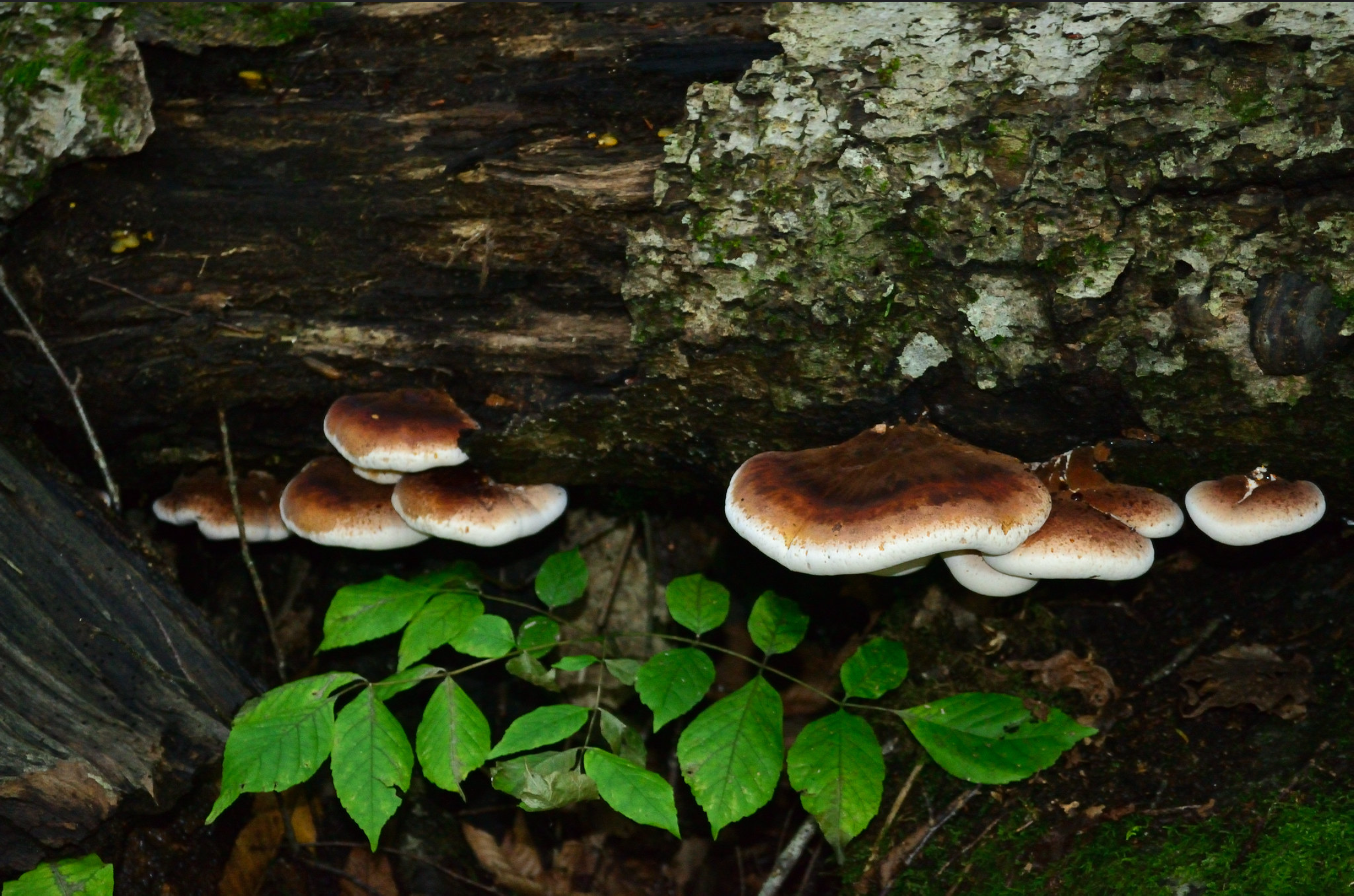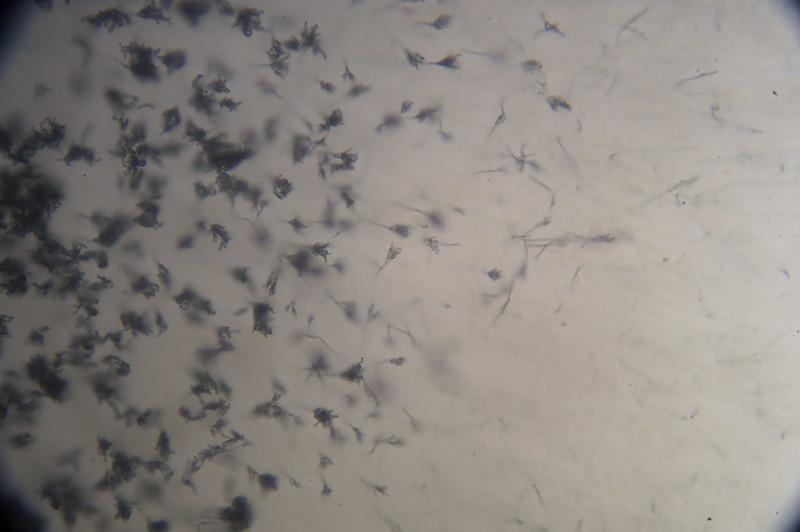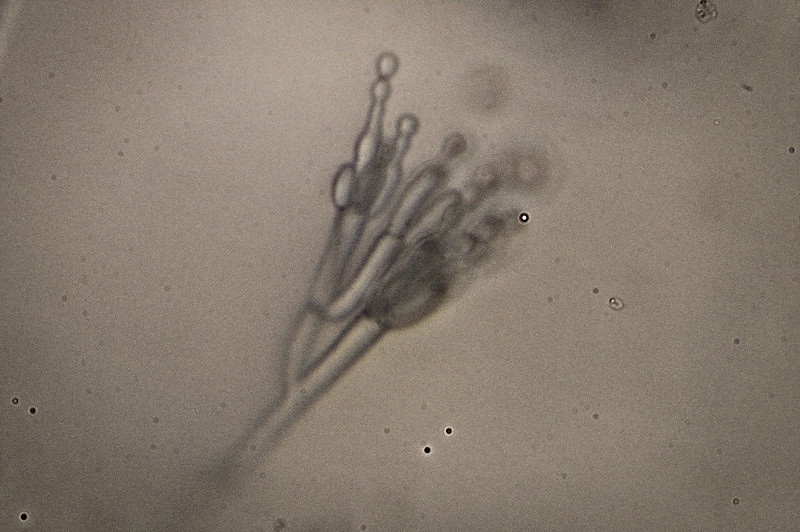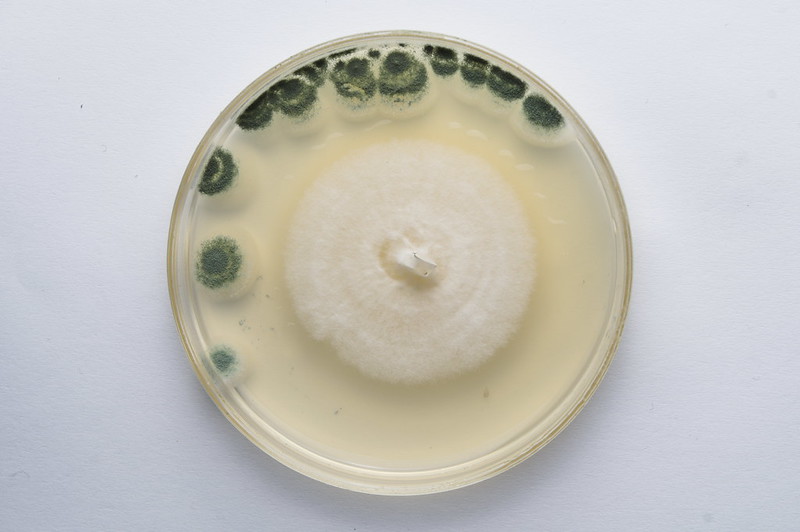I've been posting this on reddit, so forgive me if you've already read about it...
I have long had an interest in trying to grow my own mushrooms, but recently started doing a lot of reading to learn the process. I had intended to start out growing a couple types of oysters on cut straw, but while I was collecting supplies and waited for spawn to arrive I ran across an article talking about cutting up clean cardboard, boiling it to sterilize, and seeding it with chopped mushroom stems. I figured this would be a great way to practice and see how much contamination I would get.
Besides the oysters, I wanted to also try cremini/button mushrooms. One of the local grocery stores has them in a bulk bin which appears to not be processed, and it allowed me to pick out some that looked like they came straight from the ground with obvious signs on mycelium still on the base. Great! So I set everything up, drilled some air holes in a small food container, added the cardboard and stems, and put it away in the closet. And then a couple days later I read that creminis actually want a rich mixture of manure and/or grain to grow on. Well crap...
The point was still to watch for contamination though, so I let it continue. A week passed without contamination and I was happy that it appeared I had cleaned things pretty well (and we're talking a very hasty setup on my kitchen countertop in open air). On Sunday, I spotted some white fuzz. Oh boy, this could be it, the experiment is almost over. But then I checked on Monday... and it's not just fuzz, I have actual STRANDS growing across the cardboard. Could it be?!?
Well, today it's still looking pretty promising, and I'm seeing more coming out from various points in the cardboard. It's hard to get a good look at everything because of the humidity, but today is day 12 since I set up the container and there are no greens, blues, or reds anywhere. I am hopeful, although frankly amazed at what seems to be happening.
In the meantime my oyster spawn arrived but it was less than expected so I have picked up some quart jars and am waiting to receive some rye grain. I have blue and pink oyster spawn which I will split between two jars each to expand before trying to move it to grow bags with straw. It will take a little longer than planned but I'll get there. And I'm waiting for my container to be fully colonized with the unexpected spawn (or to see a definite sign that it is NOT mycelium) and then I'll get that transferred to a grain jar as well.
However it goes, I'm having fun!

